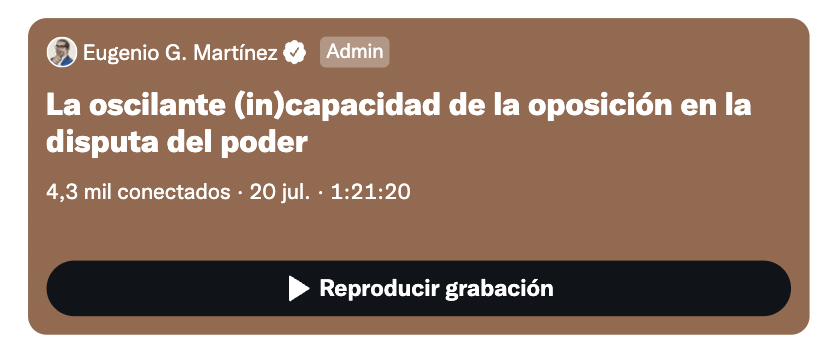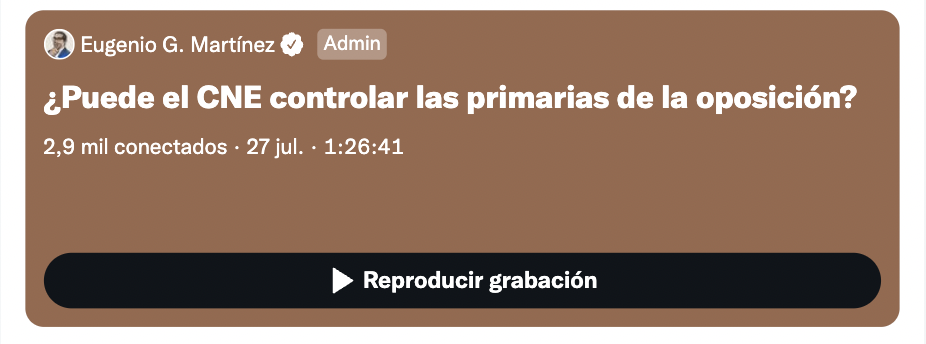| 2022 will mark the fourth year of the Interim Government led by Juan Guaidó and half of the presidential term of Nicolás Maduro. Despite the precariousness of the country, especially during the 2018-2020 period, the status quo has secured its grip on power. Can Maduro hold on to power beyond 2024? Maduro’s future is now foreseen in three scenarios beyond the boundary theoretically existing amid the presidential election that should be held in two years: 1) The analysis of the results of the elections held in November 2021 and January 9, 2022 forces Maduro to significantly improve its administration if the pro-reform sector is maintained and supports the thesis of re-institutionalizing the country and winning governorship through elections. 2) Repeating Nicaragua’s scenario in Venezuela to avoid any electoral compromise as occurred in the regional and municipal elections, especially in the State of Barinas. 3) Forcing the repetition of the 2018 political-electoral scenario in 2024 leading to the holding of presidential elections with the opposition ceasing to participate. The government’s pro-reform sector supports the efforts to ensure Maduro’s grip on power through the first scenario. However, to enable this scenario, the Venezuelan government needs to resume negotiation talks in Mexico, to help ease international sanctions in exchange for political concessions aiming at the re-institutionalization of the country. It is worth noting that the 2020-elected National Assembly, led by Jorge Rodríguez is moving in this strategy (reforming the structure of the Supreme Court of Justice) without the participation of the political factors making up the Venezuela’s Unity Platform. Barinas: the opposition wins by avoiding vote dispersion As noted in previous reports, from a political-electoral view, Barinas provided an overview of what can happen in Venezuela in an election process compromising Maduro’s tenure: Military control of vote counting and issuance of results, candidate disqualification, resulting standards, other State branches’ intervention in the electoral process, use of public resources, and chavistas and military sectors’ denial to surrender the power to Popular Will. To understand the symbol that the so-called original chavistas granted to Barinas, it is worth recalling that, apart from being the birth place of Hugo Chávez, the Chávez family controlled the governorate of the state since 1998. Between 1998 and 2008 Hugo de los Reyes, Chávez’s father, was the governor of the state, followed by Adán Chávez (brother) between 2008 and 2017, and Argenis Chávez (cousin) between 2017 and 2020. Despite of the low percentage of registered voters representing Barinas for the National Voter Registration, the governorship elections rerun became an election of national significance. Barinas’ importance goes beyond Chávez last name. Barinas is also relevant because of the presence of the Colombian guerrilla, the border crossing points and the military control over the entity, because the state is a geographic and geopolitical corridor at the military level through what is known as lengüeta de Barinas. This corridor allows the control of the passage between the western plains and the area of Alto Apure, as well as including a relevant passage to Los Andes. Due to its geographical location, Barinas is the traditional venue of conversations -and settlement- with Colombian insurgent groups. In essence, the main irregular group of the area is the so-called “Segunda Marquetalia”, a guerrilla group led by former FARC member Iván Márquez. It cannot be ruled out that for the first time in 20 years all the military high command (the Higher Staff or the Bolivarian National Armed Force) moved to the state to commemorate the Battle of Santa Inés. This battle occurred in 1859 during the Federal War and historically was never considered decisive, but Hugo Chávez transformed it into one of the main military feats of the country to shore up its narrative of land expropriation. In addition, in mid-December, 16 ministers were deployed in the state and Maduro’s government called out an entire state mobilization to undertake works, repair infrastructures, fix household appliances, pay bonuses, etc. Amid the campaign, chavistas removed gasoline rationing, implemented a system to refill gas cylinders from Carabobo, drilled wells and activated water extraction systems in some communities. All this effort was performed in 6 weeks. Why chavistas lost in the election rerun in the entity? The victory of opposition candidate Sergio Garrido in the governorship elections in Barinas held on January 9 can be explained through the strategy to unify opposition votes. It is worth highlighting that in the November-21 election, candidates other than those representing the PSUV and MUD obtained 26.1% of the votes cast, while in the election rerun of January 9 only 3.4% of the votes were distributed between the candidates other than Jorge Arreaza and Sergio Garrido. Meanwhile, it is worth noting that the strategy used by chavistas in the entity was effective to rescue the voting intention of Barinas residents. In this regard, it should be noted that the PSUV increased its votes from 37 to 41% of the total votes cast. It means that if the opposition vote dispersal recorded on November 21 had ben kept on January 9, Arreaza would probably have won the election rerun. Former candidate representing the Democratic Alliance for governorship elections in Barinas held on November 21, Rafael Rosales Peña, who decided to support Sergio Garrido for January-9 elections, played a key role in the strategy to avoid opposition vote dispersal. During the so-called Fourth Republic, Rosales was the governor of the state in two periods. The presence of Rosales Peña’s card on November 21 reported 44,000 votes for the Democratic Alliance (the difference between the MUD and PSUV was only 130 votes at that moment). In the election rerun held on January 9, the candidate representing some parties of the Democratic Alliance, Claudio Fermín, only obtained 5,999 votes. |
AVOIDING VOTE DISPERSION WAS THE KEY IN BARINAS ELECTIONS






